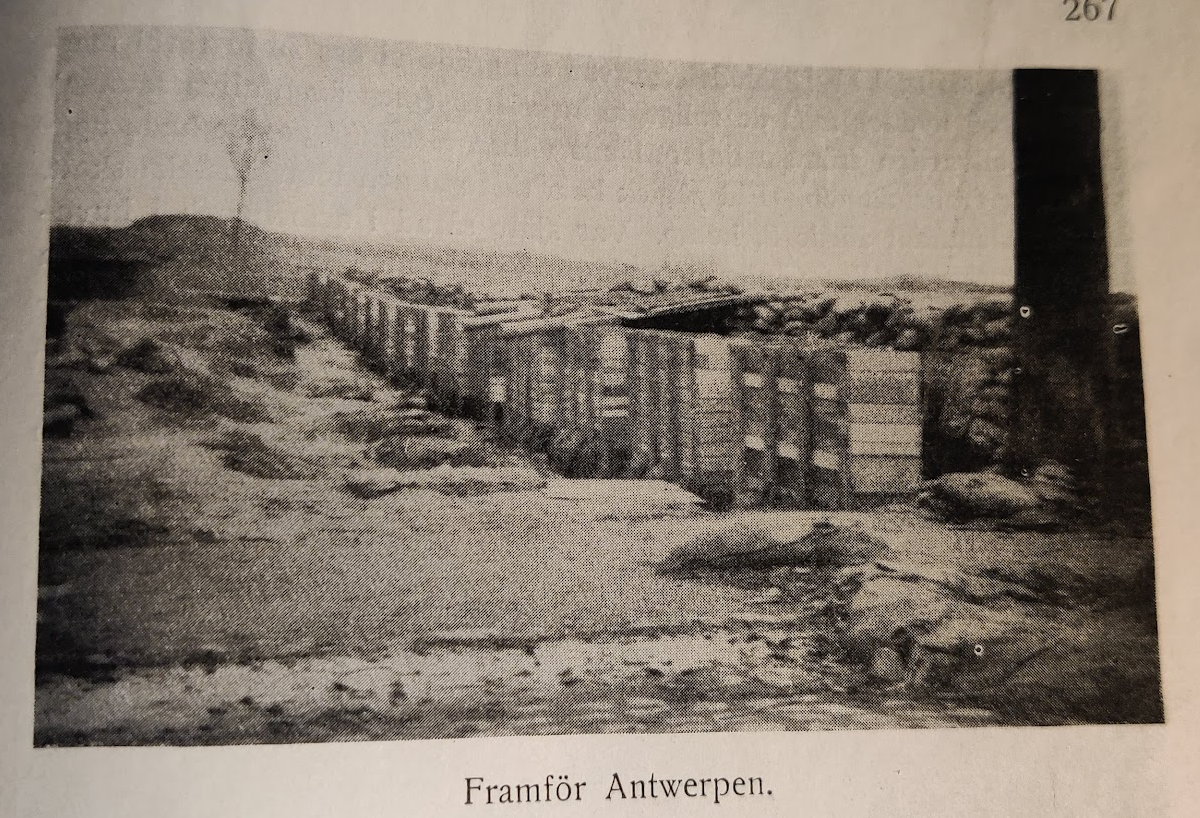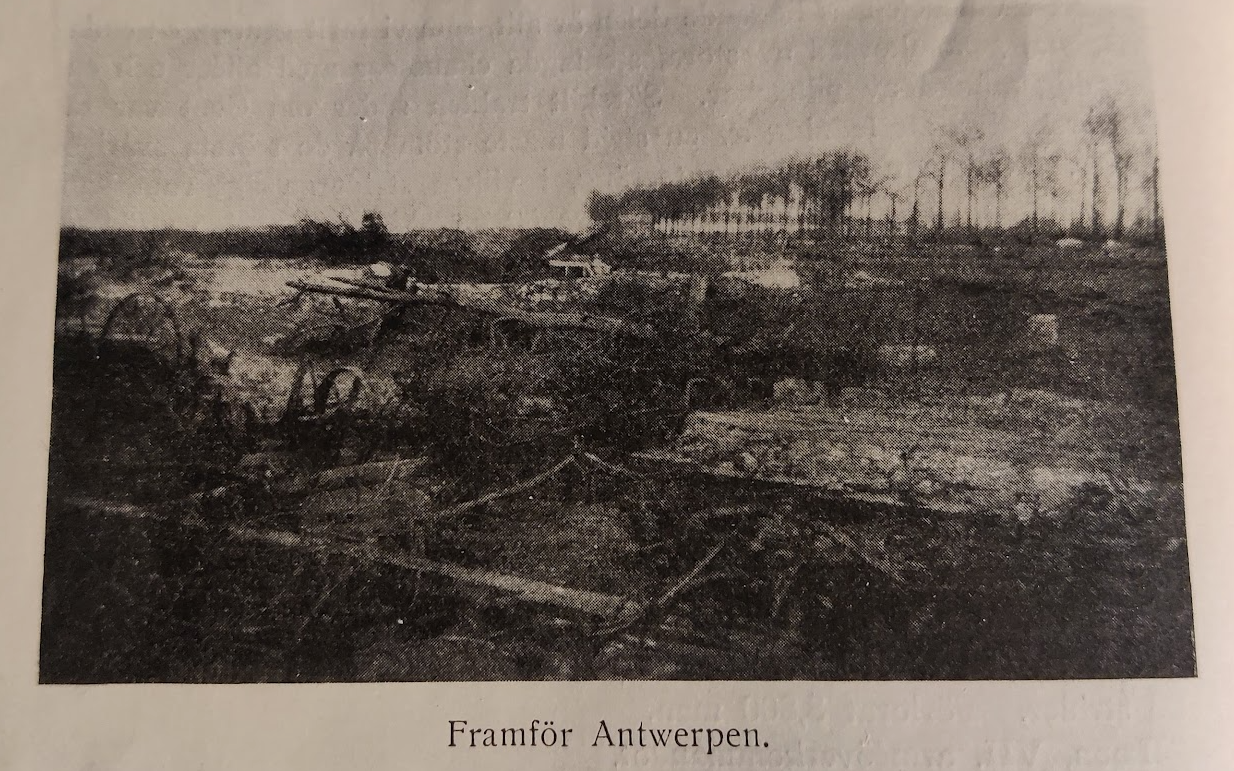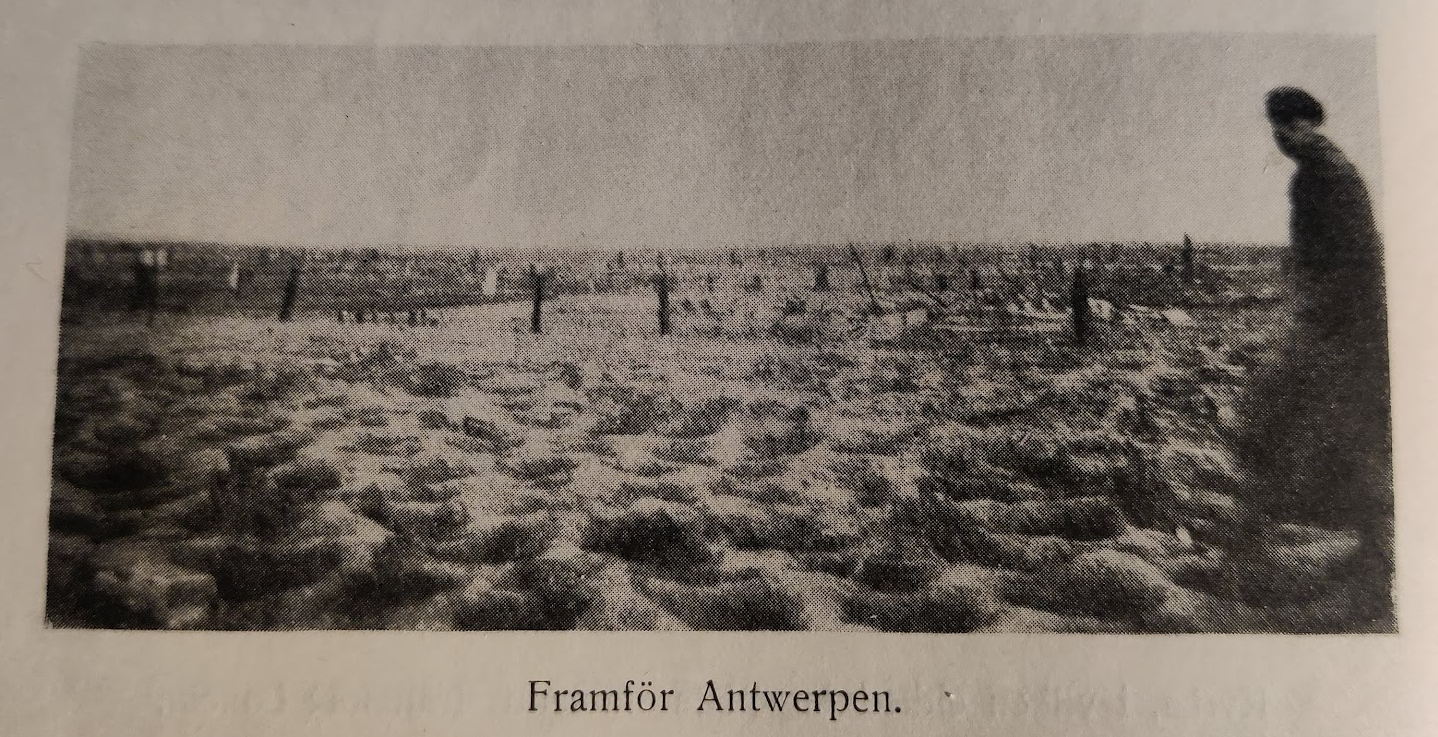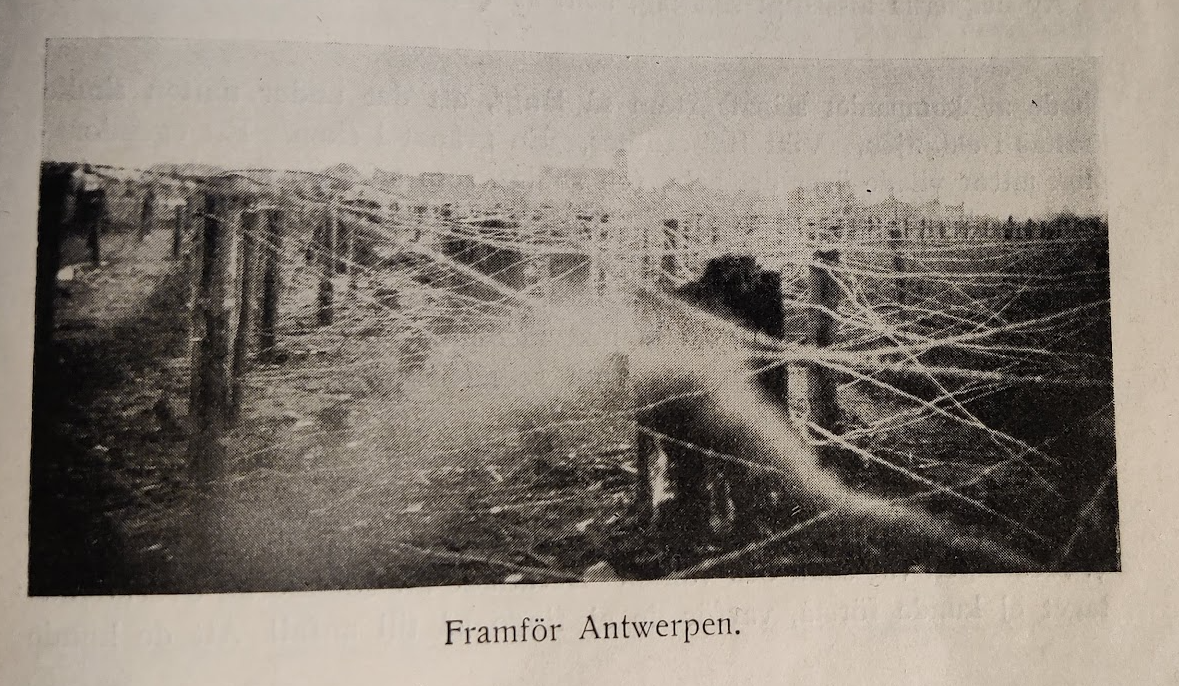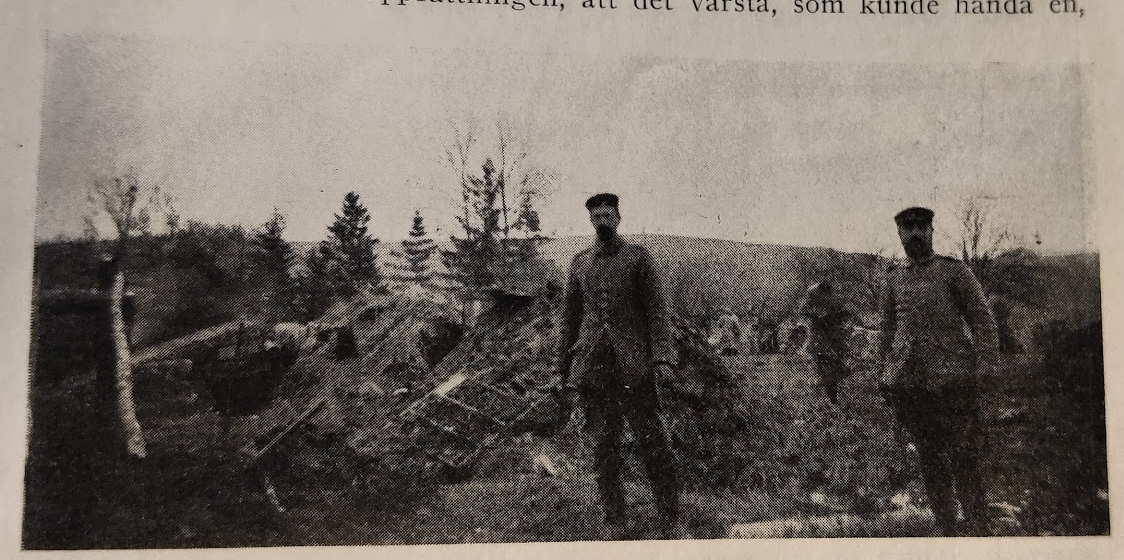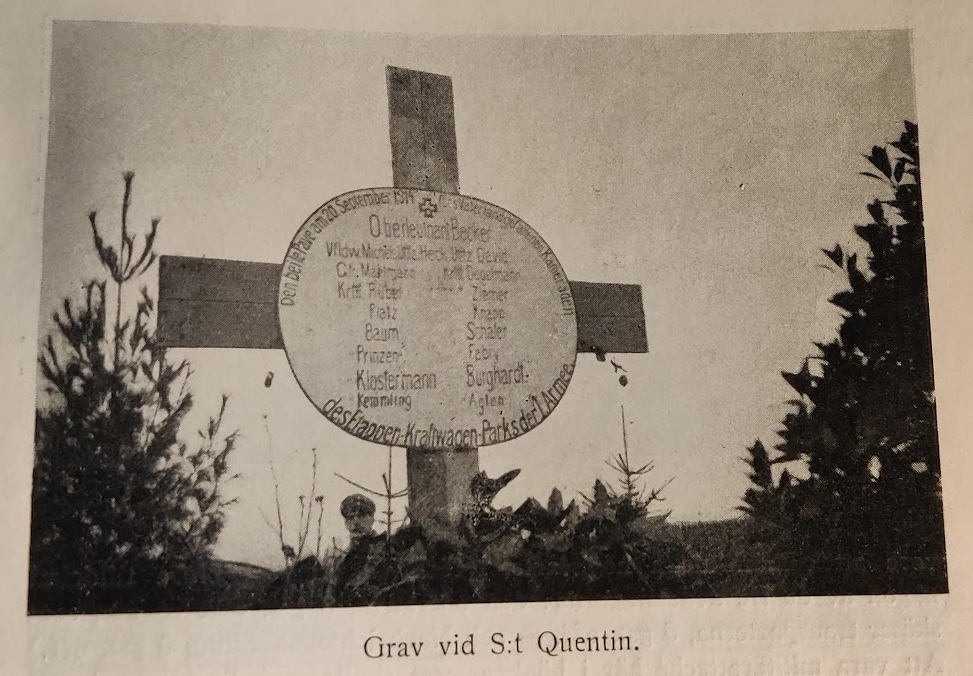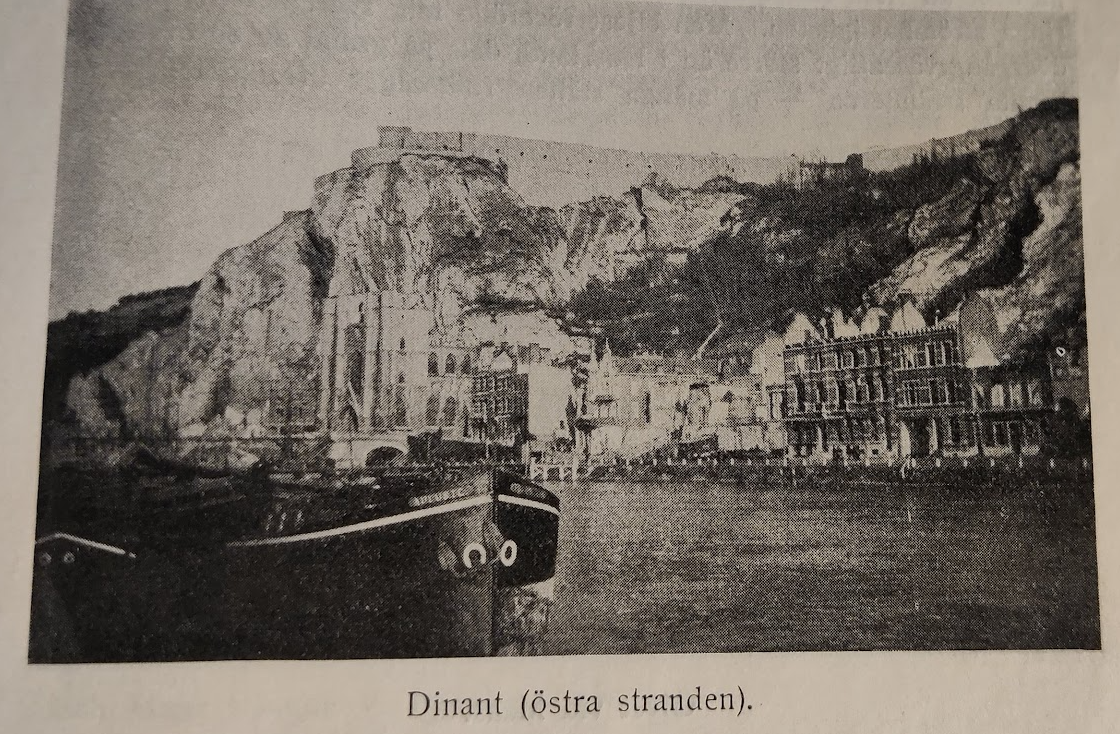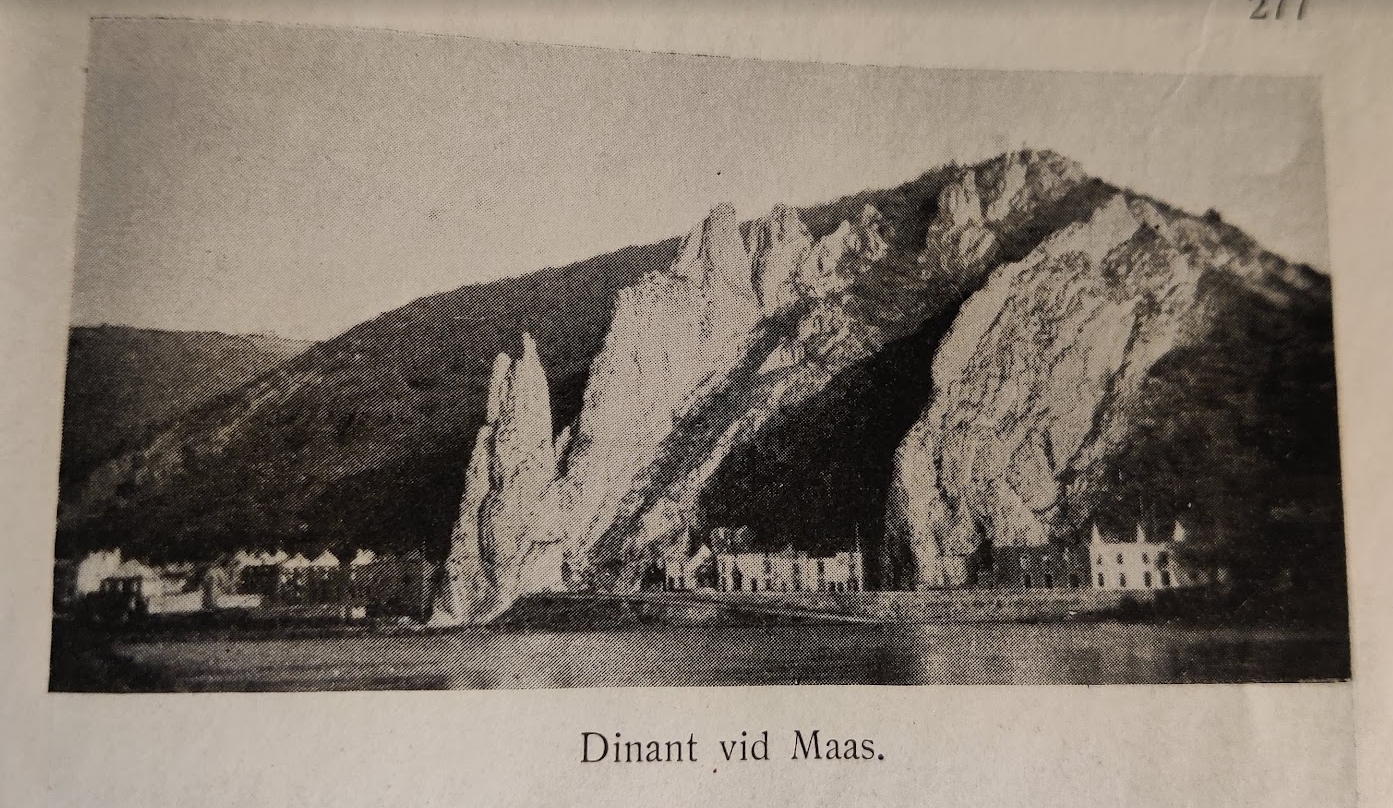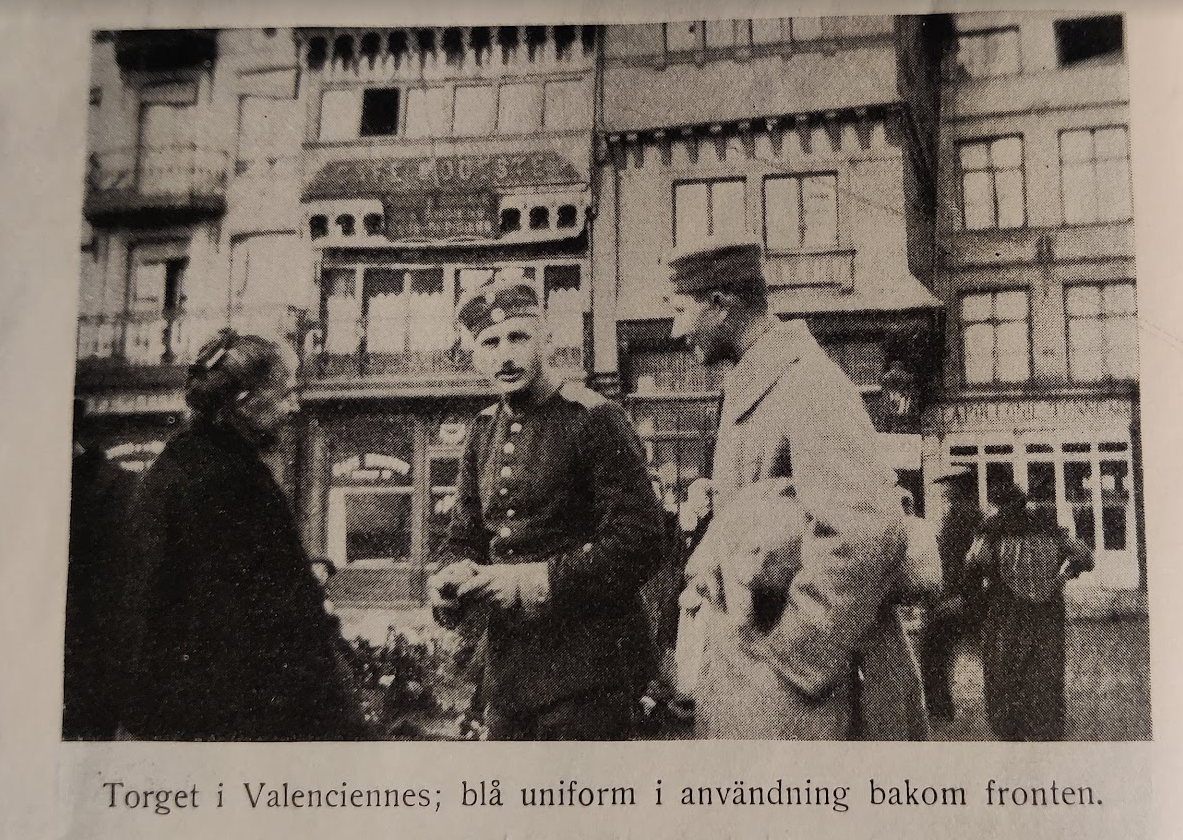I am reading the diary from the Swedish Colonel Gustaf Bouveng. It is an interesting book with notes from a period during 1914 to late 1915, when a Swedish military delegation went to the Eastern Front, to follow some German and Russian tactics and doctrines.
During their trip they visited parts of Eastern Prussia, Poland, Lithuania, Wolhynia (Today western part of Ukraine), Western Front and Munich.
I have decided to give you some small glimps of the chapter about the Western Front, and below you will see my transcription in english. In the future I will also try to give you some content about the other areas as well.
Source: Colonel Gustaf Bouveng – Diary from the Eastern Front. Stockholm 1928 – Otto Ahlströms Boktryckeri.
During the time when the War broke out in Europe, Colonel Bouveng was the commander of Svea Royal Lifeguards in Stockholm Sweden. During 1901-1902 Colonel Bouveng was working in the German War College in Berlin. He was also during his time the Commander of The Swedish War College Karlberg in Stockholm.
The contacts he established in Berlin made it easy to give hime the assignment to do this trip during the war. It became natural to spend most of the time at the Russian front. The diary only contain half of the content he wrote.
Ernst Linder
(Ernst did this when Gustaf already had passed away, but he had his permission from him to do it. I have also permission from the owner of the diary, a relative to Gustaf Bouveng, to make this small story)
November 14, 1914, Saturday.
Travel Valenciennes-Cambrai-St. Quentin-Laon. Nice weather. Nice country. Large waves in the landscape, not to much hilly, very fertile landscape. Beets everywhere. Very fiendly people. The villages are poor and dark, made of stone and easy to use in fortification in close quarter fights. In St. Quentin, by the HQ of the II Army. (Freiherr v. Loë) and the Major in charge wanted to arrest me. (It doesn’t say why, but maybe the reason was that he went through a wrong area. Joacims remarks)
The commader for the 115. Regiment told me that he had participated in 26 battles and lost 3600 men. Laon – VII Army HQ. La Fére, an old but beautiful Fort. Laon is placed on a nice, hilly part of the terrain, and you see it from far away. Very beautiful.
First we went to the station and met a great mix of soldiers from different regiments (VII Army) who were make large purchases – mostly butter (1:60 mark /Kilo!). Then went up Armé Oberkommando VII.
I was presented to Generaloberst von Heeringen. Very alike the portraits I had seen of him. Also met the Chief of Staff Generalleutnant von Hänisch.
(In the book he here presents some photos from Antwerpen from his earlier trip Between Brussels and Antwerpen. – below)
After some food we went with Hauptmann Groth (Nachrichtenoffizier) over Bruyéres-et-Montberault – Chamouille. A lot of different huts dug into the ground and above was documented. Went further on to Vauclerés. An old monastry, in and around that monstry the Naval guns from the French side had made an awful mess. We left the car there. We went by foot to the Farm Hurtebise, where fearsome fights had taken place.
When the Germans came to this terrain, the French kept Hurtebise (von Heeringen told us that). The Germans charged and took some buildings. Apparently there are both German and French units here. The german worked their way forward and are now keeping the completely destroyed Hurtebise, and 30-40 m away are the French lines.
Through several trenches we went forward and passed small huts with the most funny inscriptions, but also very serious ones, to the most forward line, the front line. A lot of posts had the French in sight. It was a constant fire. We passed an Oberleutnant from the 8th company, was injured in the arm and in the head.
He showed us the french lines with a mirror, which we also earlier saw through a gap between the sandbags. The French opened immidiately fire. The company lost daily around 3-4 men, we just met a stretcher on our way up. By the oaks a man was working with the sandbags.
Suddenly a grenade hit an oak. A very special feeling over the whole area, one soldier who was on post became totally “kaputt”, was screaming and could not stand, probably shocked, nerv shock.
We left the area and went on again. Went the wrong way, went up to Laon again. Oberst von Blomberg met us. We talked tacticts with him. Then came Generaloberst von Heering, he was kind and nice. He told us that the soldiers could not understand why they could not charge. They should easaly break the first line but then the French would fire from the other lines, which they have everywhere, that a charge would not be worth it. Only if the Germans could charge all over the line at the same time.
The officers in the staff were very friendly. One of them have had an assignment to open up all the lockers at the War Ministry in Brussels, and he found really interesting things. (For example an order to an Belgian higher officer in the General staff, that in June this year go to General Joffre for some discussions)
November 15, 1914, Sunday.
Travel over Montaigu to Neufchatel-sur-Aisne (snow) to General von Emmich. Completely charming. Told us very interesting things about the charge against Lüttich (Liège). We were interupted by Hauptmann Groth, who told us it was time to go. I was supposed to visit her excellence Frau Gemahlin, if I ever go to Hamburg. Von Emmich was small, fat, ugly , bluered in his face, but his kindness made us forget everything else.
From Neufchatel to Brimont. All is destroyed! Castles, houses, churches, everything!
This is just some notes from his travel at the Western Front at this time.
Below I have gathered some photos from the chapter.
I have more photos from Dinant from when I was there in 2014, but I just find those two now. I think I can see some of the old buildings in Dinant, above, also in my photo below.
The text from the diary may not have been translated into the most perfect english, but I think you can follow the story.
Below you will find a rough picture over where they went and in which area they were in mid November 1914. The approximate route is marked with a red line.
Next time I will try to look more into their trip around East Prussia an Lithuania.


